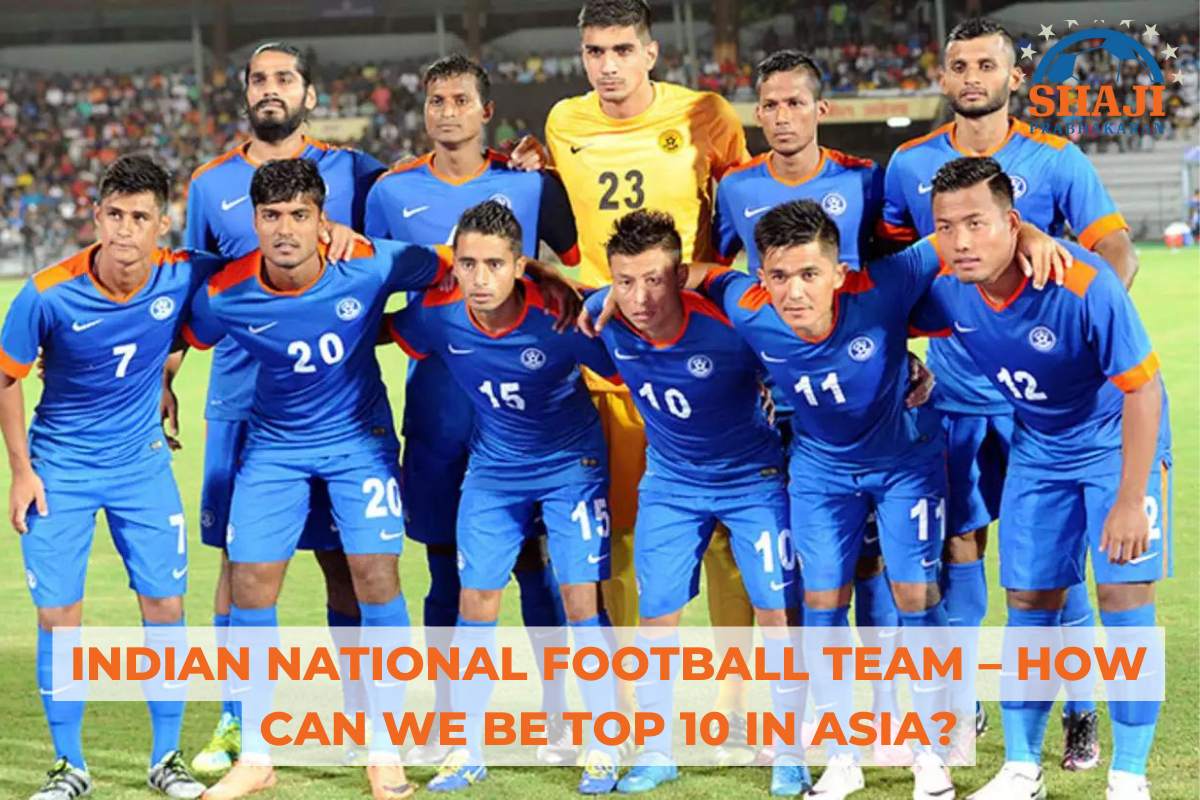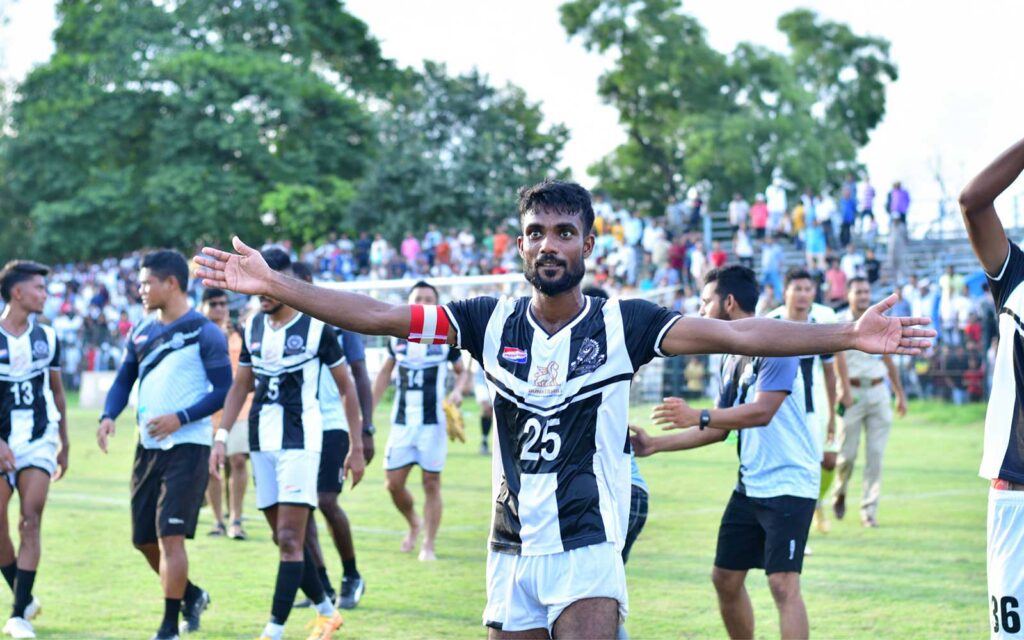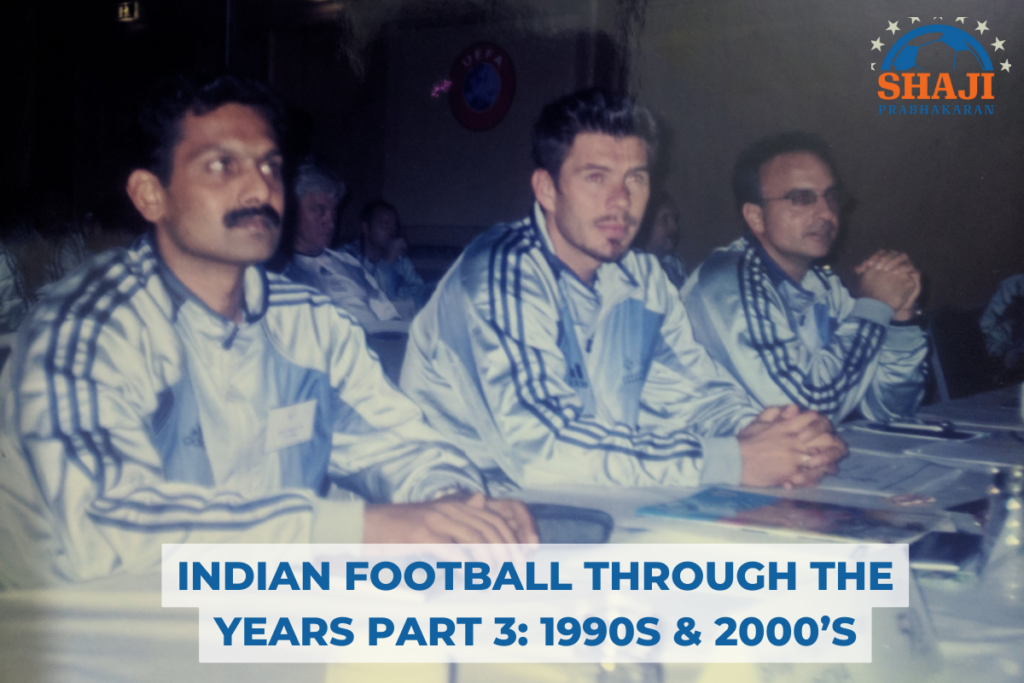Football in India will certainly reach a boom time and dominate Asia in the future.
The standard of football in any country is reflected by its National Team’s performances, results, and trophies, and of course, FIFA Ranking.
Chuni Goswami, PK Banerjee, and Tulsidas Balaram (Golden Era)
Our best performances were in the 50s, 60s, and early 70s. The Golden Era in Indian football was 1951-62. Those were the days when India could defeat all the current top teams from Asia, and now 50 years have passed we couldn’t break into the list of top-ranked football nations in Asia. The last we played in the Olympics was in 1960, we don’t know when we will play next in the Olympics.
Current Position
India is currently ranked 105 in the world and 19th in Asia. In March 2015, we slipped to 173, which was the lowest since the advent of FIFA Ranking. Our highest ranking was 94 in February 1996. We’ve risen above the days when we were only sinking down in the World Rankings. One positive thing is that our ranking hasn’t go down below 110 since 2017. However, on average, we are ranked 131st (since the inception of FIFA Ranking in 1992). That means that we have made less impressive progress in the last 30 years.
Blue Pilgrims – Fan club of the Indian National Team
Growing Fan Culture
India’s large aspirational youth population and ever-growing football fanbase want to see India among the elite group without any delay. No one should find fault in them for their wish to see Indian football rise faster to greater heights. It is difficult for them to believe the reasons they keep hearing about why football in India is not progressing and reaching the World Cup stage.
The majority of young football followers in India have grown up watching big European Leagues and made European big clubs their own, this trend mainly started in the early 90s. Many would blame these fans for their affiliation with European biggies as the majority doesn’t have any link with local football in India. But can they be blamed for their intense following of big European clubs? They were not trapped by European clubs or Leagues to follow these clubs but this happened due to the sheer vacuum in our footballing ecosystem in India. Except for Kolkata giants and a few attempts here and there, there were no options for fans but to fall in love with foreign entities, largely due to the quality of football on display and the presence of mega football stars.
Last 5 years things have started to change, with ISL teams and national teams, more fans are getting organized around teams and national teams. This is a positive sign, and we will see greater energy and participation from fans in the coming years. We have this massive power and fan base, we must have a solid plan to engage them to make them an integral part of our journey to reach the top of Asia.
Path to World Cup Goes Through Asia
India’s football potential has been talked about ever since we started to follow football, particularly for the last 30 years with more punch lines, like, “Indian football is a sleeping giant”. There is no doubt there is a realistic potential for Indian football to be a dominant force in Asia. But to reach there and consistently move up the ladder cannot just happen overnight. The path to World Cup participation goes through Asia and there are no shortcuts either to jump at one go to the top.
Strategy and Plans
We have to clearly identify gaps in our football structure and put medium to long-term solutions to advance our football to the next level.
India has had a strategic plan to develop football since 2015. It looks like every aspect of football is planned and implemented following the strategic plan. We should be able to find answers to the following questions in the strategic and technical plans to satisfy ourselves that India is on course to reaching the top 10 in Asia by when.
The questions are: What is our national football philosophy as a nation? If we have one, is it reflected on practice and game days consistently across the national football structure? What should be our playing style? What kind of playing style we should adopt, practice, and play? Do we have a consistent coaching philosophy? Who should be our Head Coach? What should be the background and profile of our Head Coach? What is our National Team Development Plan from short-term to long-term? What kind of players we should develop as a country? Who should be driving the elite player development pathways? Is the coach’s education consistent with the national philosophy? Are we producing the number of coaches based on our needs and national philosophy? Etc., etc.
Domestic Competitive Structure
Our competitive structure is still way behind the best. The majority of top players in India are playing less than 30 competitive games in a season which is significantly below the global average. With a lower number of competitive games, our players will not be adequately prepared to compete with the best in Asia. We have to also work hard on developing a competitive youth structure. Our players would require better competitive exposure from a very young age, the competitive structure at the youth level doesn’t provide an adequate number of competitive games and when a competitive environment is missing at the youth level then it also has an impact on local coaches.
India National Team Champions 2012 Nehru Cup
The whole youth development cycle remains non-competitive and thus, many talented coaches like players never gets the opportunity to move up the ladder and fade away. Can we name one player who can be a superstar? Can we name one player who can be equal to Sunil Chhetri if not better? Sunil Chhetri, 36 continues to inspire with his performances, and he with record appearances 115 and record number of goals, 72 for India remains the inspiring figure on the pitch to deliver results for India. Igor Stimac – Head Coach India
Head Coach – Team Builder
One of the most important aspects that will play a significant role in our entry into the top 10 in Asia will be the role of the Head Coach the national Team. This position is key, it is not about the personality or the background of the coach, but what he is going to do with the team how he is going to influence the football structure, and how consistent he is going to be with the playing style and at the same time looking ahead with a long-term goal of India while fulfilling short to medium-term goals.
Bob Houghton – Former India Head Coach
We have seen many foreign coaches as Head Coach of the Indian National Team for the last 40 years, without going into the merit of each coach, the question we should ask ourselves is whether each of these coaches implemented a common football philosophy and put in place a consistent playing style. Without going into different coaching styles practiced by all these coaches we have to visualize Indian football will play football with a consistent style and philosophy by 2030 or 2032 and consistently thereof.
A coach who can be here for the long-term and agree to deliver results and milestones on India’s short-term, medium-term, and long-term goals. A transparent deal, which makes clear to fans and stakeholders what is that a coach is supposed to deliver within his term as a Head Coach. When the expectation is clear, the coach will also be under less pressure if he is on track with agreed objectives and key performance indicators. As long as the coach is meeting his KPIs, fans, or in this matter no one will have issues.
Further, important is to have a team of support staff based on competency, track record, and professionals who can support the coach and be responsible for their areas. Sometimes the area of support staff is ignored, they play vital roles, those assistant coaches are basically the ears and eyes of the head coach, at times their input and opinions result in taking key decisions, selection of players, training factors, tactics, strategy, game situation, game management, etc. etc.
Elite Player Development Structure
Currently, the majority of elite players are coming through national youth team development pathways. This is a preciously serious limitation of our elite player development structure in India. More top clubs in India have to start investing in elite player development programs with their respective clubs. Without clubs taking a lead role in scouting and developing players India won’t find all those talented players from every location in India. It is in the interest of clubs to invest in youth development and elite player development, and if we see such a scenario where clubs have become active in this aspect then the national team will benefit immensely.
Competitors in Asia
We have to understand that those top Asian countries, dominating Asian football are just not going to slip away from their respective positions to make space for Indian football to overtake them. We have to be strategic in our approach, nothing is hidden from this world about what these countries are doing right as part of football development, football is an open book, and performances on the pitch and strategies adopted by these countries to reach this level just didn’t happen, it is the result of consistent hard work with long term planning and taking right decisions with the involvement of competent human capital for long. Thus, for India to reach the top 10 in Asia won’t be an easy journey but it will be a difficult and complex process.
Qatar National Team – Champions AFC Asian Cup 2019
There are numerous examples in Asia, of how the Korean Republic, Japan, Qatar, Iran, etc. have reached their current level, and the success of Qatar as a football nation is most recent. From all these successful countries we can pick certain best practices which can be adapted to our system. To reach the top 10 in Asia India will have to move to 79 position and above in the FIFA Ranking. Syria is the 10th-ranked Asian country with a world ranking of 79. In simple words, India’s target should be to reach the top 80 in the world ranking by 2027 or earlier than that with a plan of action.
From Asia, only 11 countries have played World Cups to date and India can be motivated by the fact that DPR Korea, Kuwait, and Indonesia are currently ranked below India in Asia thus there are only 8 countries ahead of India who were part of the World Cup in Asia. With 48 teams in the World Cup starting in 2026 many Asian teams who never made it to the World Cup have put a plan in place to reach the top 10 in Asia to challenge places for World Cup 2026 and beyond. It is an interesting scenario for Asia to start the 2026 World Cup qualification rounds, likely to start in 2023. It is just two years away and by the end of the 2026 WCQ campaign we might not reach to the top 10, but we have to establish India as a serious top 10 contender in the 2027-30 cycle.
High-Level Exposure
There is no substitute for playing high-quality international games with higher-ranked teams to gain competitive exposure and experience. Players’ development and growth have a great impact on high-quality competitions and if our players can regularly play with good teams then we will see our players reaching their top potential.
India got a direct AFC Champions League group stage slot and to see FC Goa playing in the AFC Champions League was a good development considering encouraging performances against top Asian club sides. Being part of ACL means our players will get more and more exposure which would also help our national team. Glan Martins getting a call to the national team probable squad is a good success point due to AFC Champions League exposure and overall, ACL displays from Indian players were exceptional.
Consistently qualifying for the AFC Asian Cup will have to be a priority goal for India and with the increased number of teams since the last edition we won’t be struggling to qualify anymore for this continental competition thus, the target should be, how India can move to the next round, one better from 2019 edition and reach to the quarterfinal stage by 2027 edition.
Route to Asia’s Top is through South Asia
We shouldn’t forget the fact that India is not an outright dominating force yet in South Asia, in our last two encounters with Bangladesh and Afghanistan we just managed to get draws and when we meet these two teams again, we will exactly know how much progress we made in last 15-18 months. We should not forget that the route to be part of the elite in Asia goes through South Asia and for India to grow and win the hearts and minds of the fans we have to outrightly dominate South Asia first, and then we should move to the next target in Asia and thus ultimately, we will reach to the top 10 brackets in Asia.
Investment
Investment coming into football in India is still negligible, with ISL and India hosting the youth World Cup and other upcoming international competitions no doubt investment coming into football has gone up but still, it is at insignificant levels. The biggest example is when the broadcaster shies away from broadcasting Indian national team games and we all have experienced it. With great struggle and last-minute arrangements, we are finding broadcasters for the National Team games. This situation points to the fact that football is still struggling commercially, and television companies are not making a profit or healthy returns from football in India. This does impact at the end the whole value chain, from players to everyone in the ecosystem.
Those who run football clubs, and football associations will testify to how hard difficult it is to find funding for the game in India. This area will have to improve in the game well in time to fund investments in key areas, elite player development, youth competitions, football infrastructure, coach development, training, etc. Without timely investment, our challenges will remain static and our struggle to reach the top 10 in Asia will only get longer.
Prediction – India Top 10 in Asia
The earliest India can be top in Asia is 2027, but before that, we have to reach a few other important milestones. Specially qualifying for FIFA U17 and FIFA U20 World Cups by 2025. We already played FIFA U17 World Cup in 2017 as a host and now it is important to reach there through a qualifying route. The day we qualify for the U17 and U20 World Cups India will have different personalities in the minds of the Asian football community. Progress in any field goes through a pathway and for the Indian national team to be top 10 in Asia will be achieved through multiple action points under a definitive strategy.
India National Team
Our potential to be top 10 in Asia is very high and this is an achievable goal for Indian football within 5-7 years. Let’s put our best foot forward to achieve this goal and build confidence in the system by communicating the steps and plans to achieve this goal. The system must reflect transparency, accountability, and openness in taking all the stakeholders together to strike the top 10 in Asia. A country of 1.4 billion doesn’t lack anything for India to grow in global football through Asia. All the good luck.
Long Live Indian Football!



